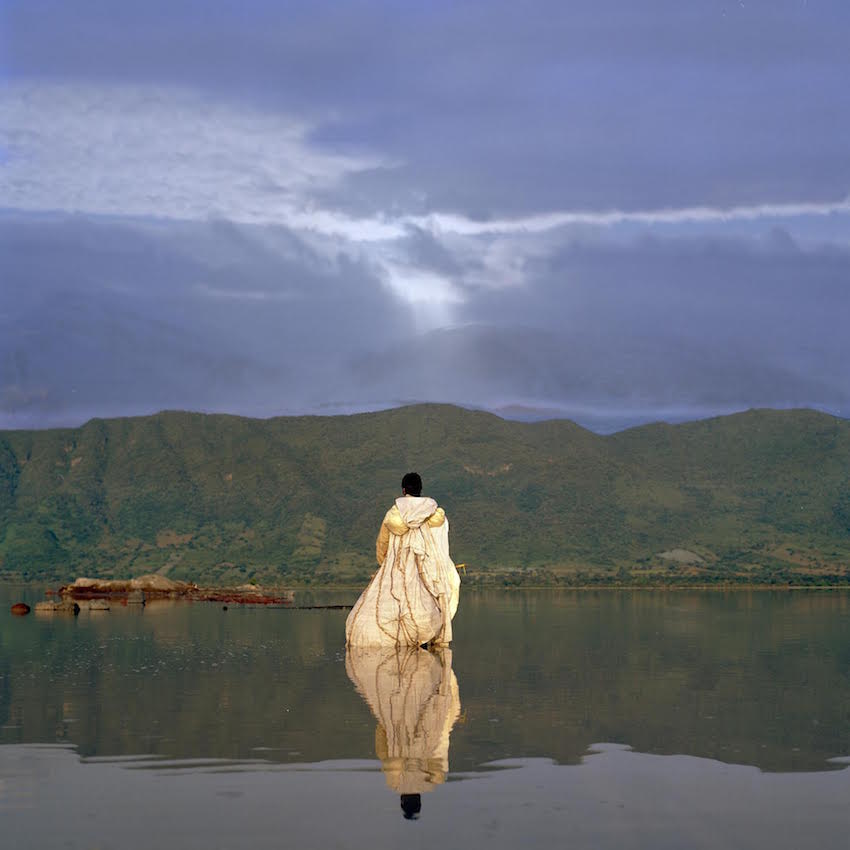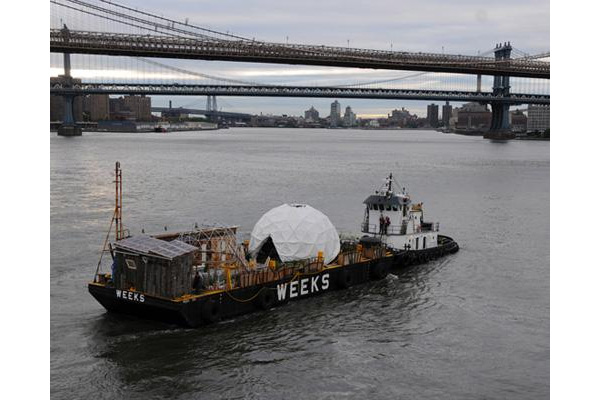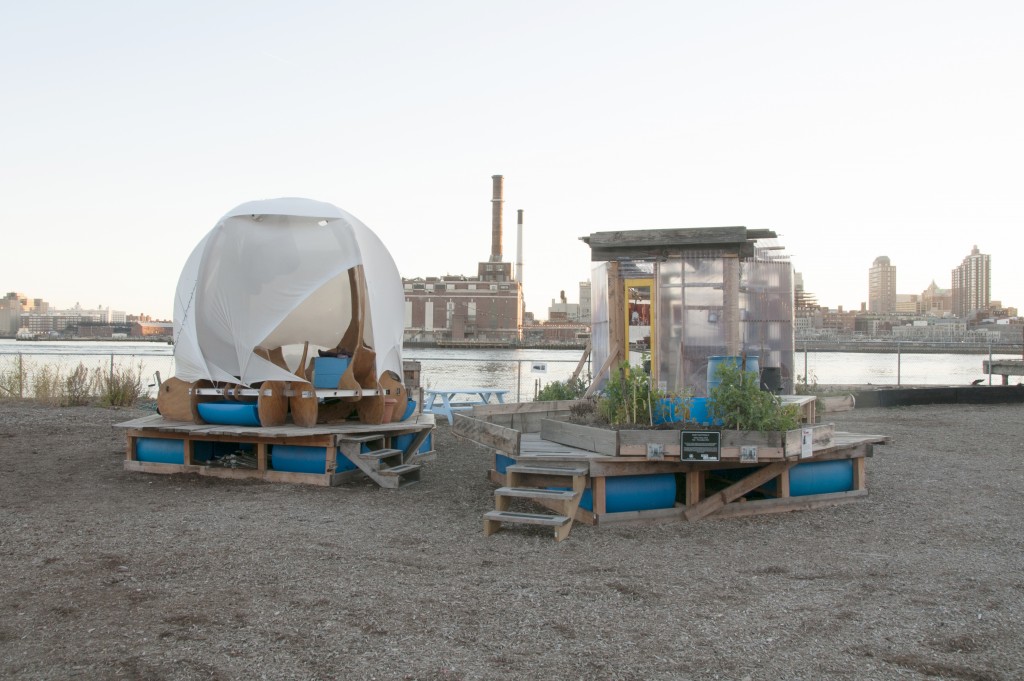Mary Mattingly is a visual artist who's work considers systems, dystopian futures and possible alternative ways of living. Her work is performative, informative, and restorative.
Much of her early work took the form of wearable sculptures with useful functions geared toward inhabitants of a world wherein systems of energy and resource distribution have collapsed. For example, some of these wearable units provide completely-enveloping cocoons for keeping warm at night but can also be worn as clothing, or collect water and store energy.
In the Navel of the Moon, 2008
Eventually, Mattingly felt that "The dystopic future was very sad to me, and
breaking out of that was necessary at some point. I really started to think
about my own life and how outside of this future that I was inventing, we all
had to live."
She began to consider ways in which she could delve into her own life and reevaluate her relationship to her belongings and the systems of production, distribution and consumption through which our modern world currently functions.
Own It is an ongoing project in which Mattingly is documenting all of her belongings and exploring the means through which they come to belong to her.
Screenshots taken from OwnIt.org
Pull, 2013
Above: Mattingly, pulling all over her possessions, crosses the bridge through which barges enter NYC's largest Port
While her earlier work imagined possible ways of surviving as an individual in a dystopian future, environmental and economic events in the earlier 2000s, such as floods and water privatization, turned Mattingly's interests toward more communal units.
Waterpod, 2009
"The Waterpod demonstrates future pathways for nomadic, mobile shelters and water-based communities, docked and roaming.
It embodies self-sufficiency and resourcefulness, learning and curiosity, human expression and creative exploration. It intends to prepare, inform, and provide an alternative to current and future living spaces.
In preparation for our coming world with an increase in population, a decrease in usable land, and a greater flux in environmental conditions, people will need to rely closely on immediate communities and look for alternative living models; the Waterpod is about cooperation, collaboration, augmentation, and metamorphosis.
As a malleable and autonomous space, the Waterpod is built on a model comprised of multiple collaborations. The Waterpod functions as a singular unit with the possibility to expand into ever-evolving water communities; an archipelagos that has the ability to mutate with the tides.
The Waterpod is mobile and nomadic, and as an application for the future it can historicize the notion of the permanent structure, simultaneously serving as composition, transportation, island, and residence.
As with architecture, art is largely about stories: stories of its inhabitants, its community, its makers and their reflections on the past or expectations of the future.
Based on movement, the Waterpod structure is adaptable, flexible, self-sufficient, and relocatable, responsive to its immediate and shifting environment.
The Waterpod is an extension of body, of home, and of community, its only permanence being change, flow, and multiplicity. It connects river to visitor, global to local, nature to city, and historic to futuristic ecologies.
With this project, we hope to encourage innovation as we visualize the future fifty to one hundred years from now. This will be the first of many."
Flock, 2012
Flock, 2014
In 2013, Mattingly designed and built a "scalable and amphibious ecosystem" at Pier 42, an area which had been flooded during Hurricane Sandy.
Triple Island, 2013
House and Universe, 2013
"For 'House and Universe," I looked at the micro (my personal life and possessions) and the macro (the global supply chain, it's formal and informal sectors.) In a global supply chain, commodity production can be deadly. Extraction of minerals has been known to fuel wars, and it's peoples' desire to consume that is the primary driver of wars like these. I visited different points in the supply chain, from factories to ports and transit points to its end.
I wanted to turn my useful objects into something very useless so I wrapped them into these big boulder-like forms that really illustrate their mass and obstruction. I made a decision to live my life from now on without them.
The photographs in "House and Universe" are collages...which are made up of photographs from multiple places and times, re-emphasizing the lack of place-specifity and illustrating their interconnection."
Swale, 2016 and ongoing
Swale is a public space for growing edible plants which are available to the public for harvesting and consumption. It is located on a barge that travels around NYC waterways and docks at different ports to allow for a wide range of public access.
Sources & Further Information:















No comments:
Post a Comment